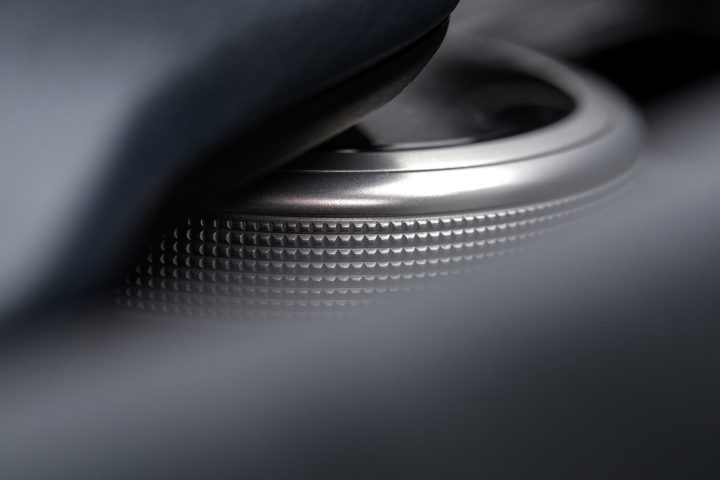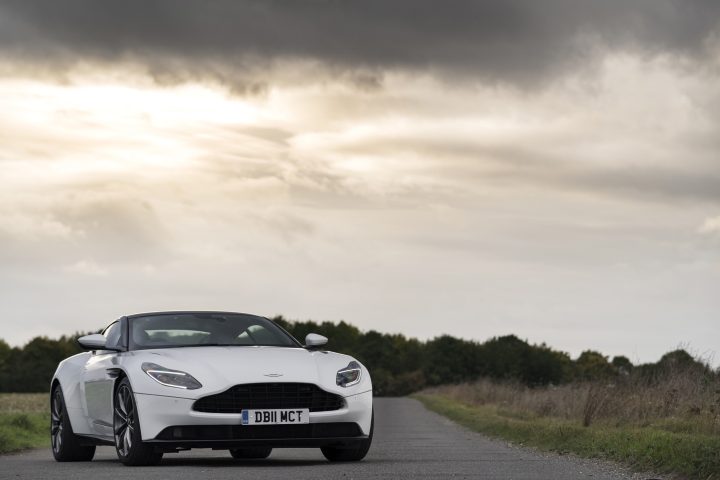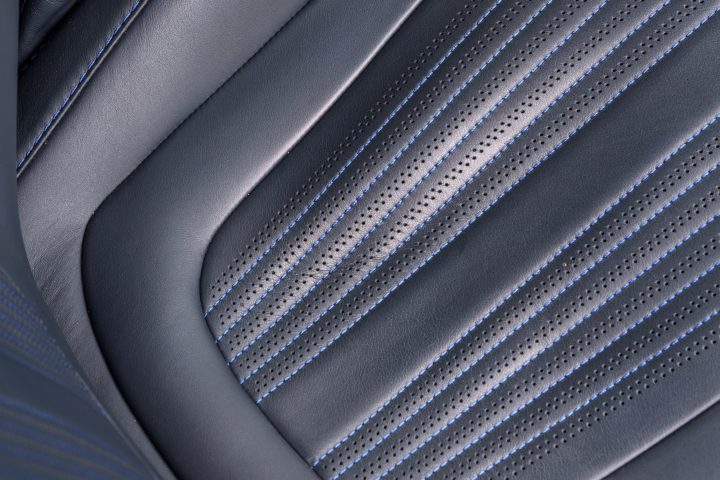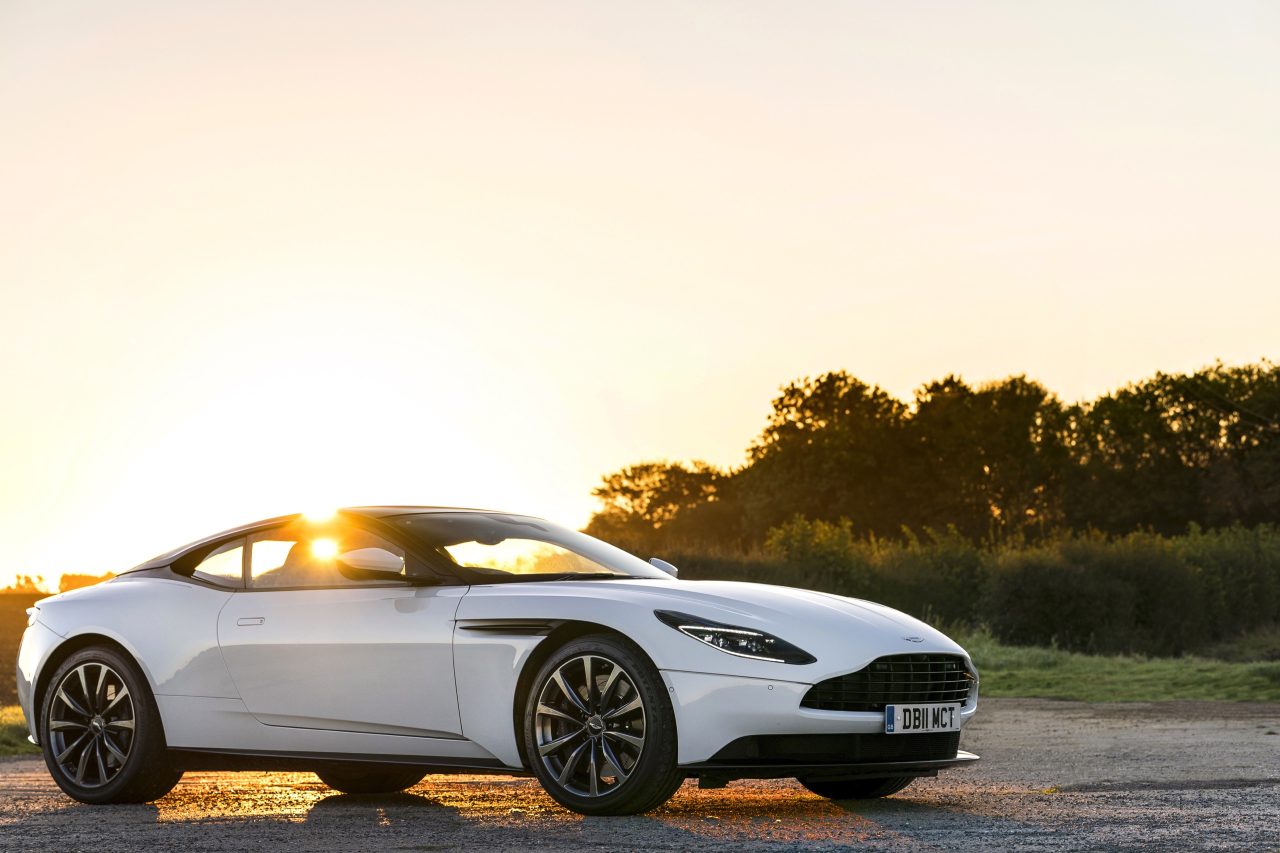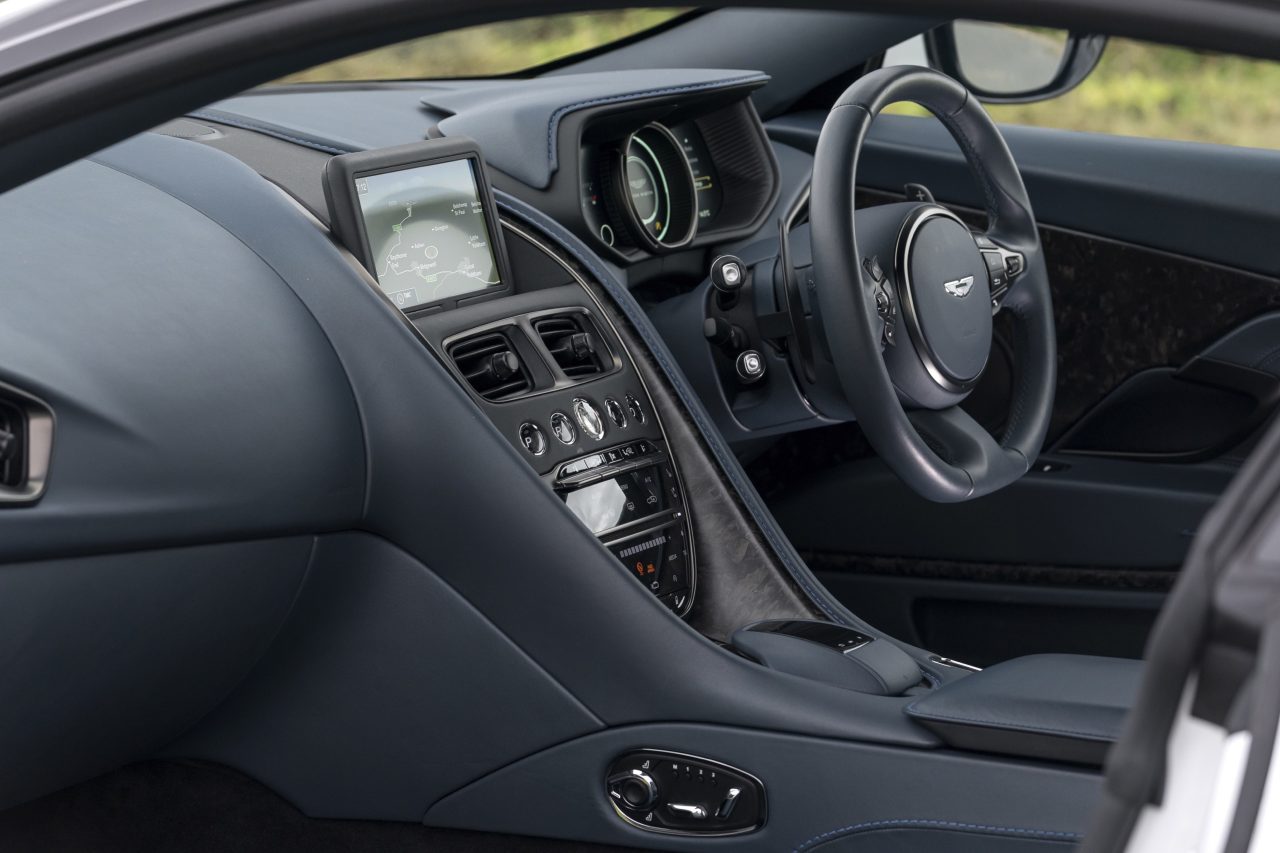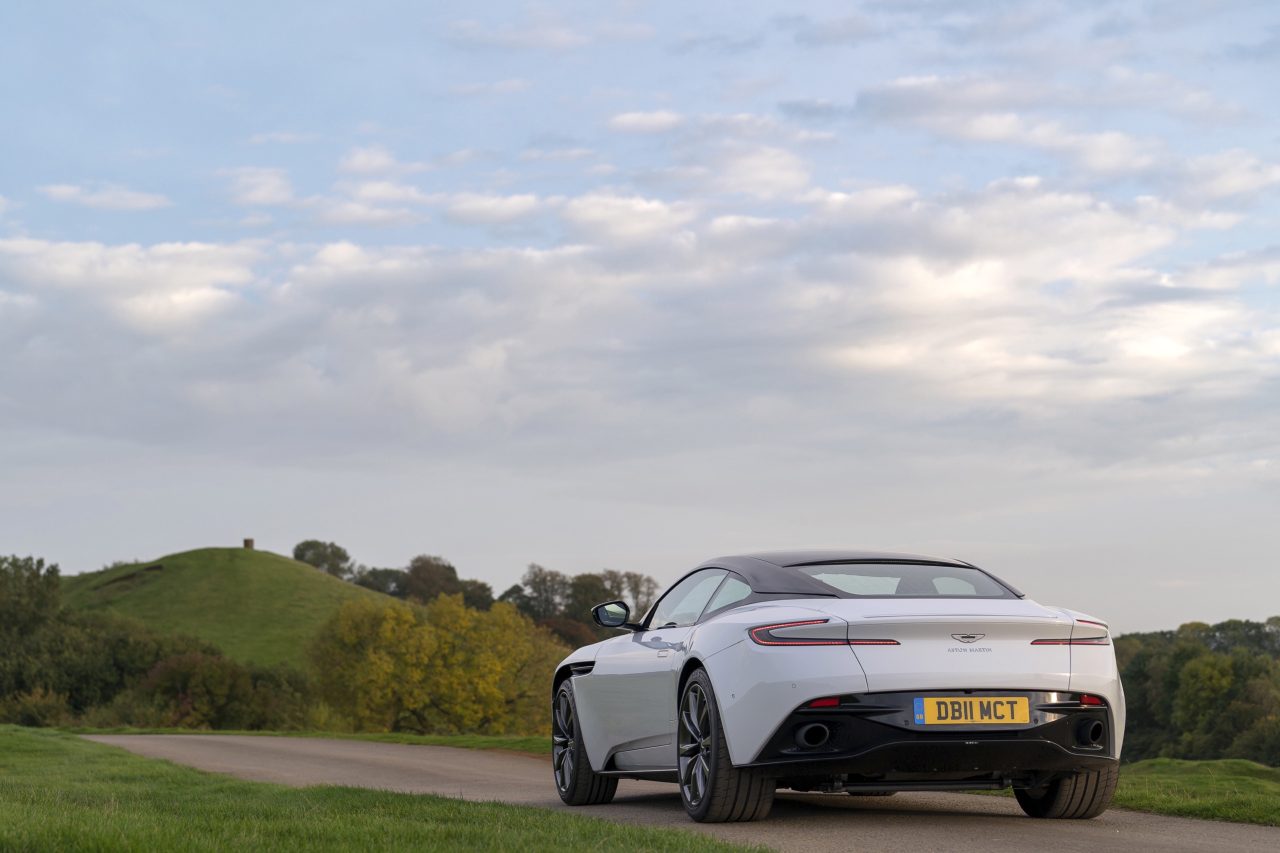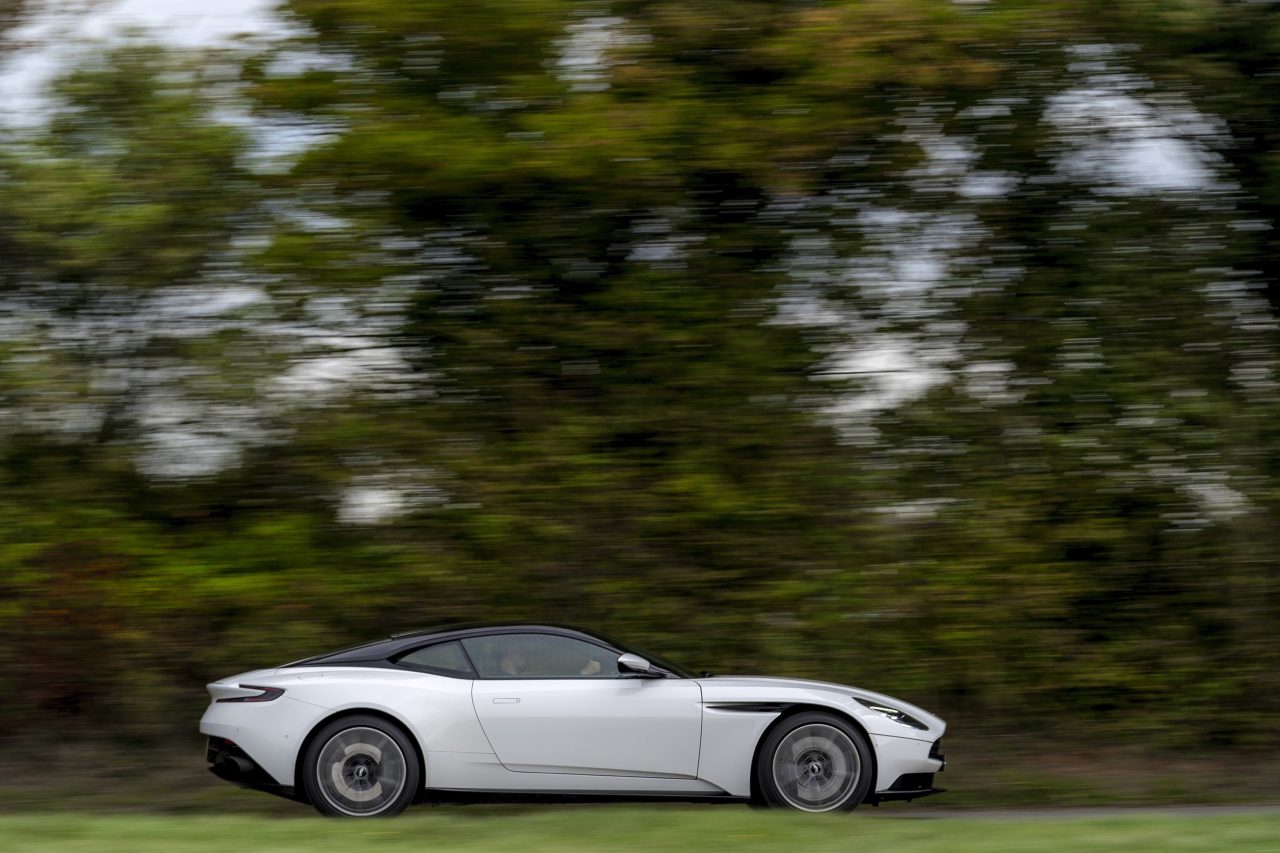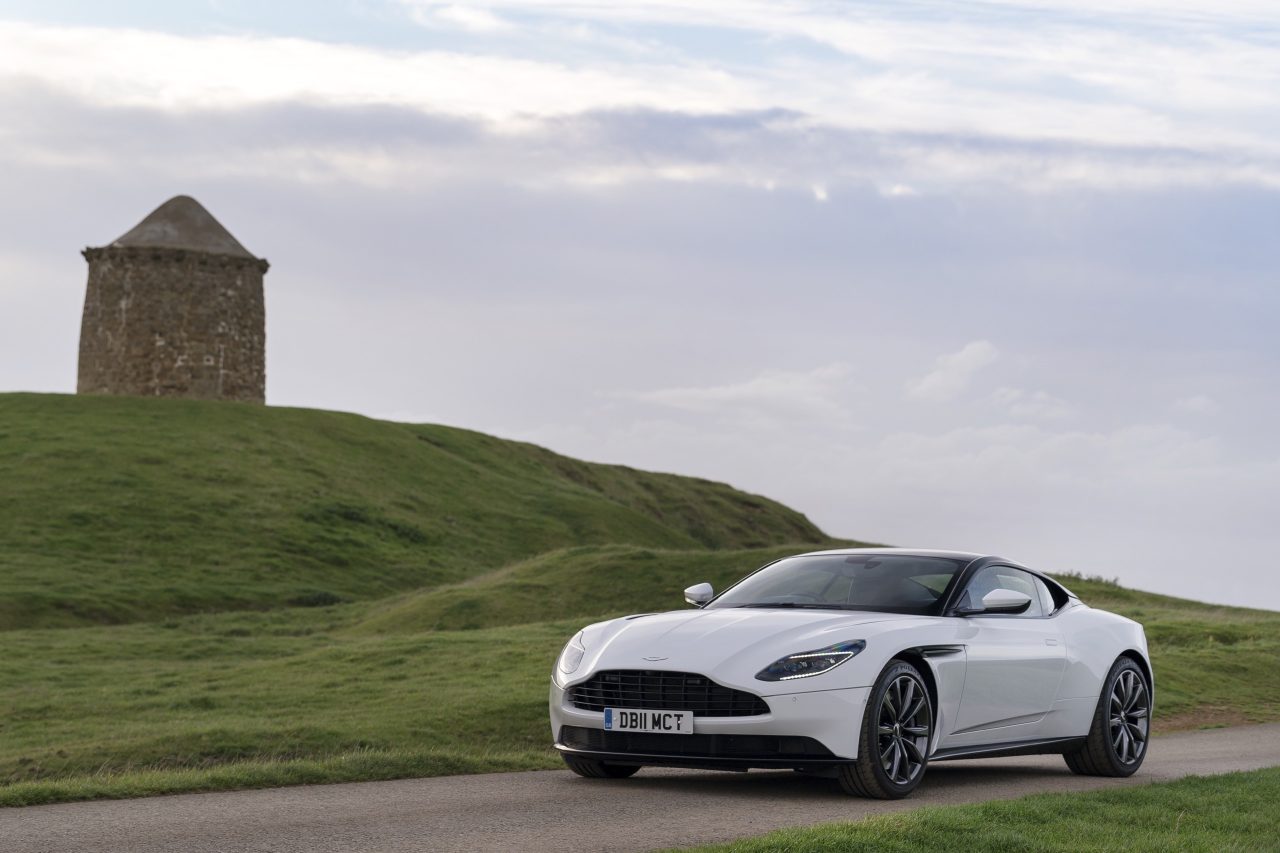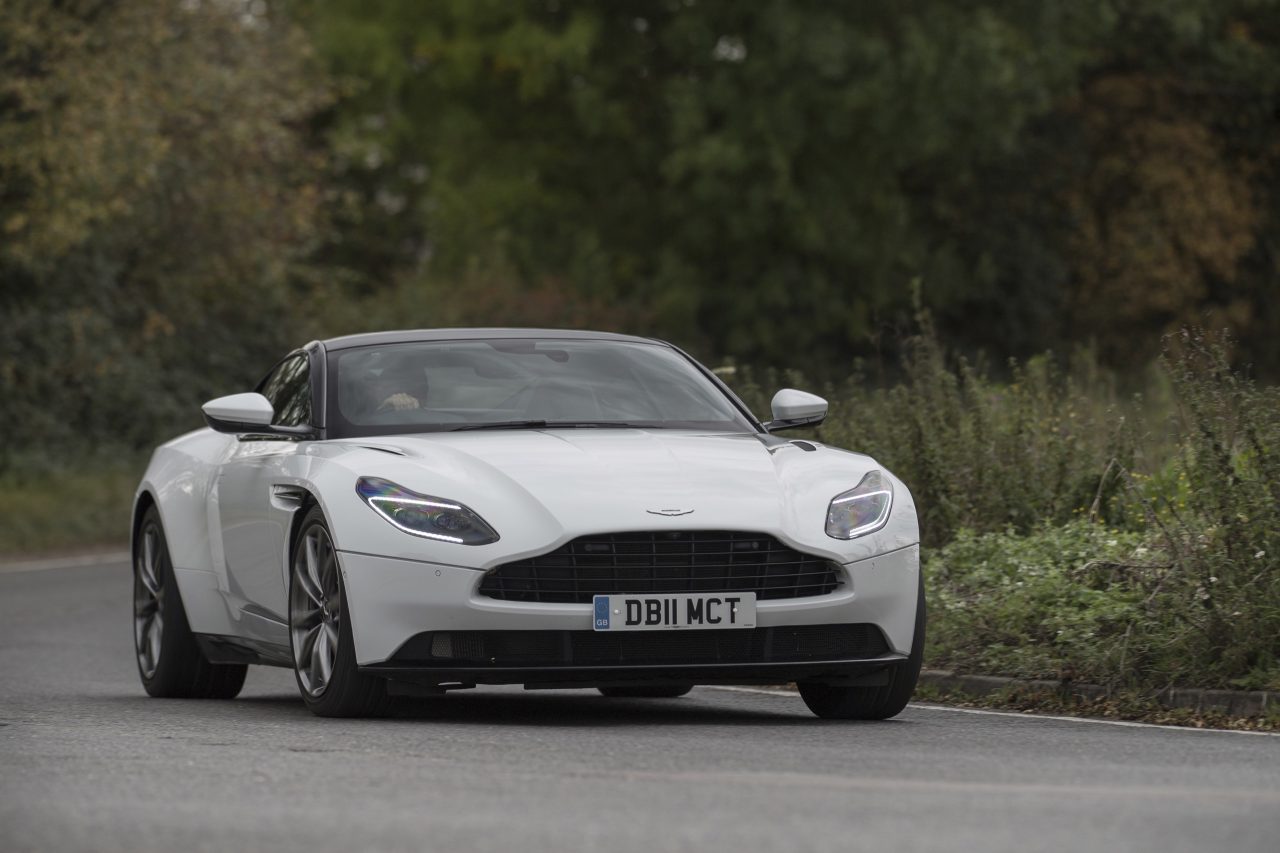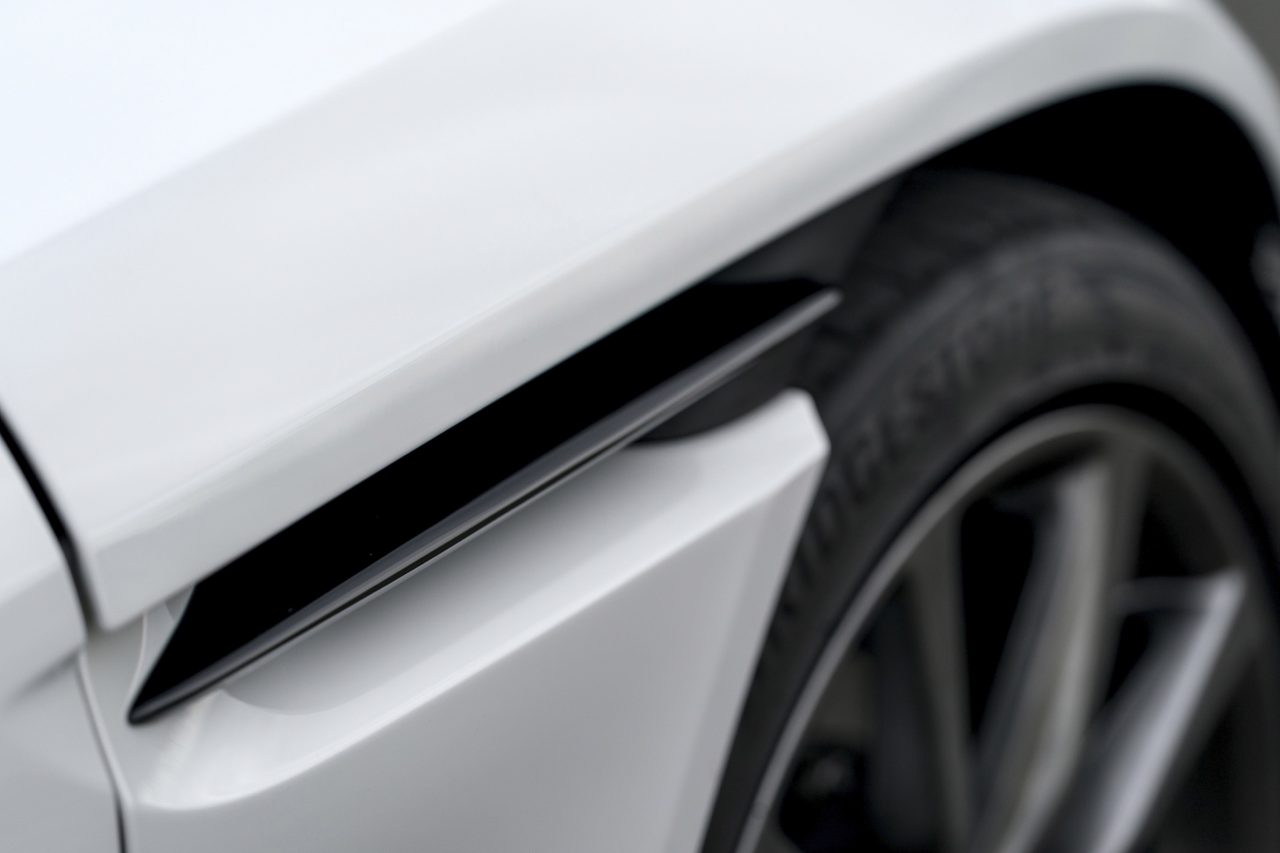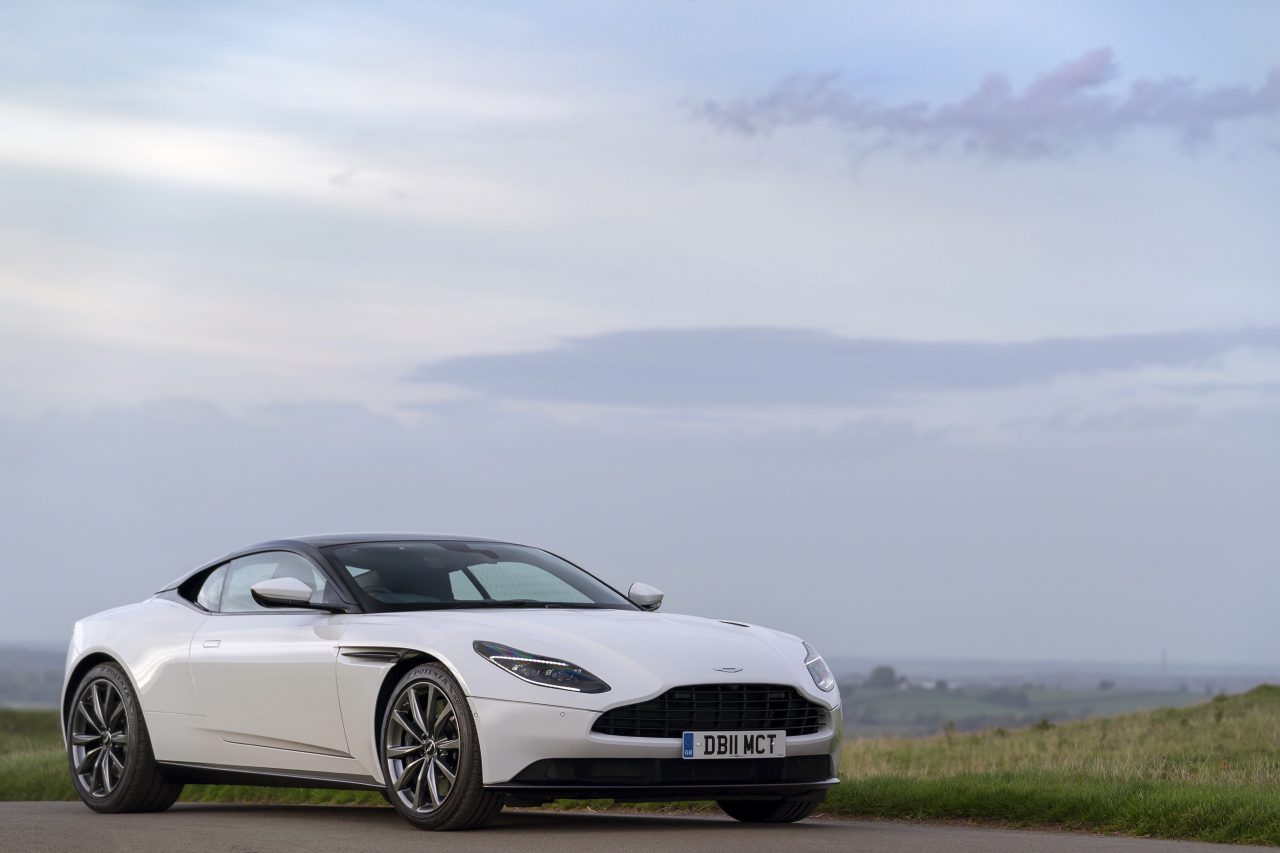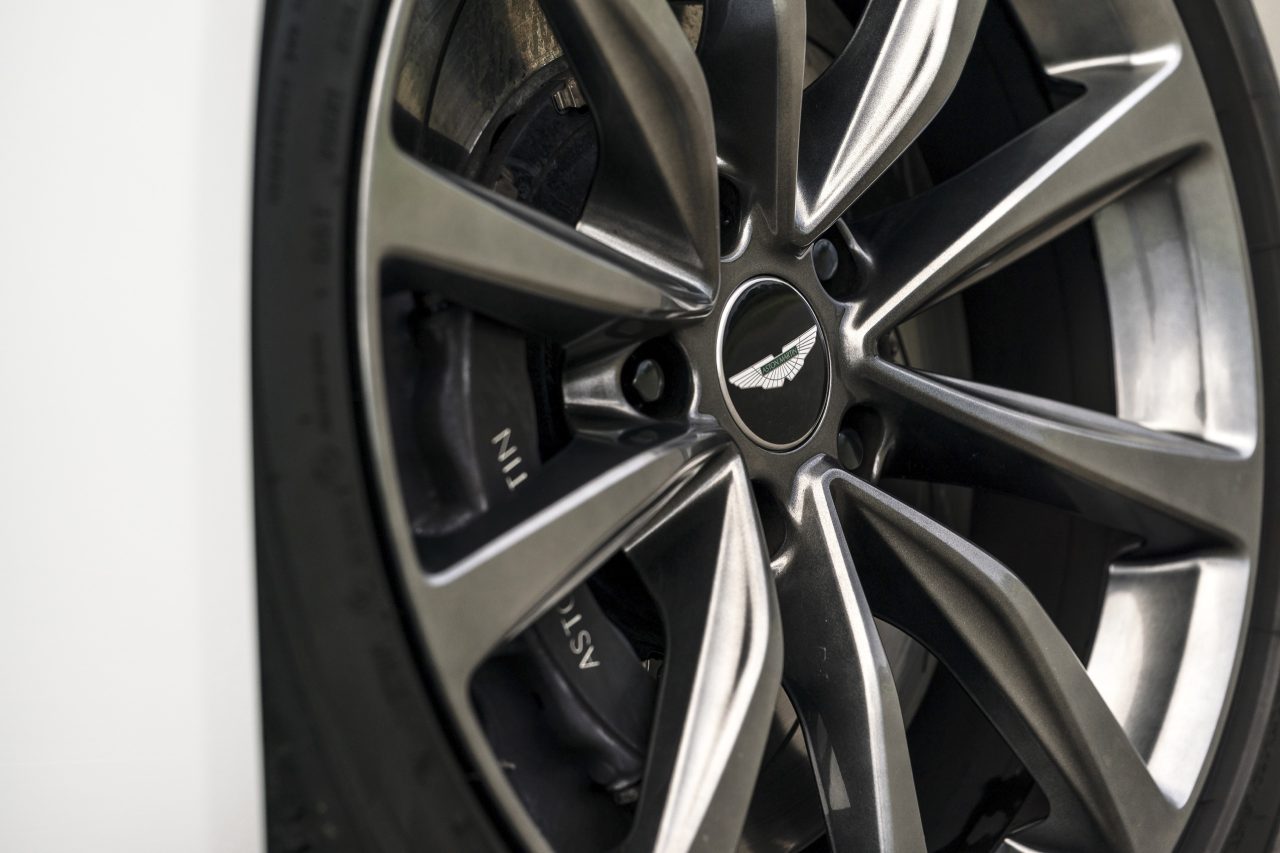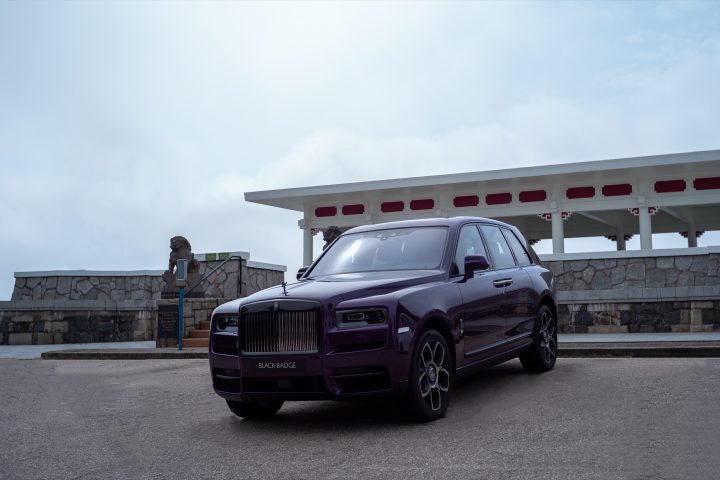This review should start by saying that in 2019, it’s virtually impossible to buy a new car that’s inherently compromised, especially within more elevated price brackets, therefore acquiring an Aston Martin DB11 V8 would be an excellent decision, and you should certainly go ahead if you have the means and the garage space. Of course, no one is visiting this site for a one sentence review of such a marvellous piece of engineering, and such a short summary does not do the hardware any justice, so perhaps a few more words might help to convey the sheer enjoyment of spending time with a DB11.
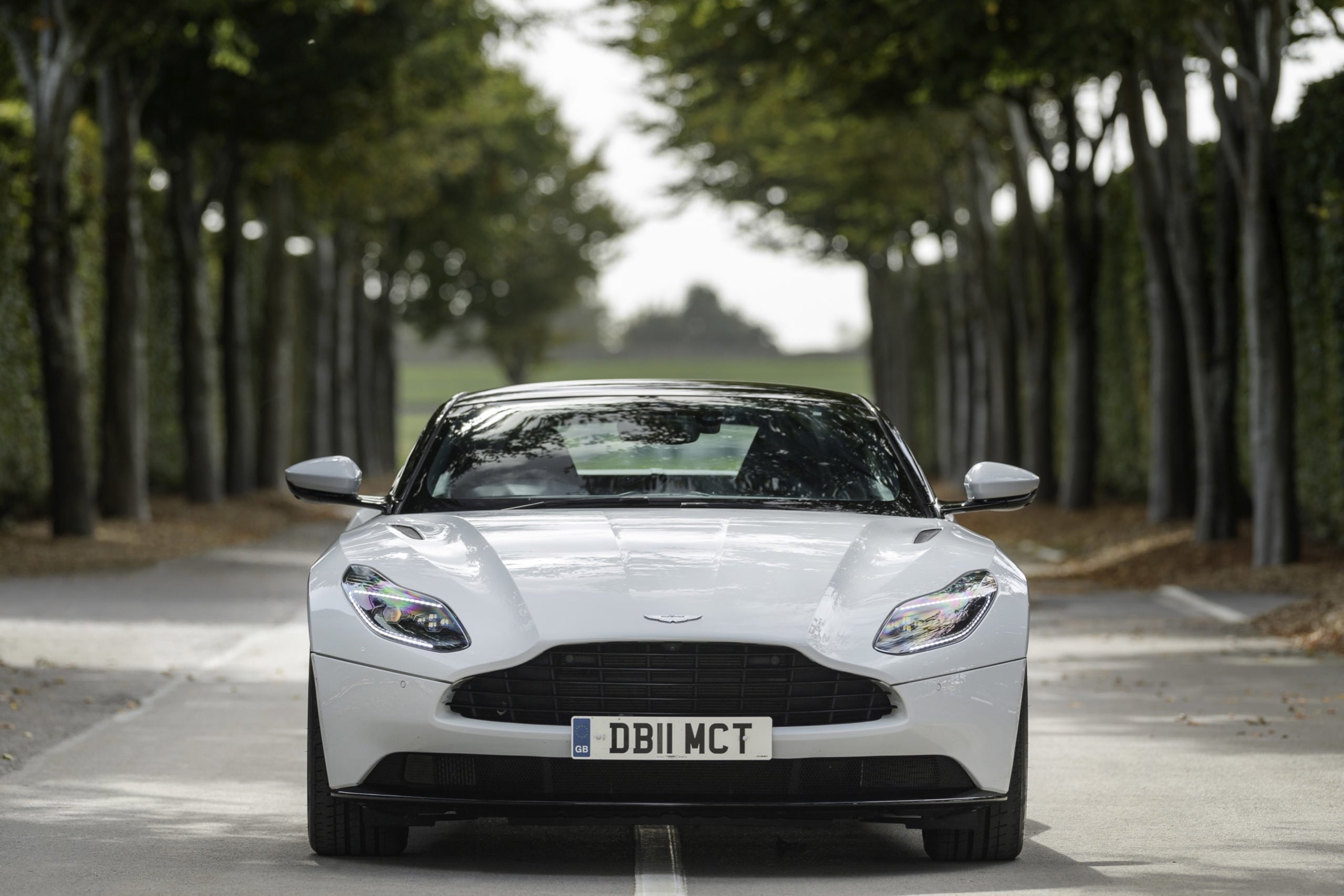
To wind back a little bit, the model was introduced in 2016 as a replacement for the venerable DB9, a car which was extremely well-regarded and is still much loved by many an owner, although after 12 years in production, it was getting a bit long in the tooth. The first version of the DB11 to arrive on the market was fitted with a 5.2-litre twin-turbocharged V12, putting out 600 bhp, giving the car a 0-60 mph time of 3.8 seconds and a top speed of 200 mph. In May 2018, the model was superseded by the DB11 AMR, which upped power output by 30 bhp and offered a revised shift program for the excellent ZF 8-speed gearbox, increasing the top speed by 8 mph, and dropping the 0 to 60 time by 0.3 of a second.
When the V8 was unveiled a year after the DB11’s initial launch, there was a fair amount of confusion among automotive enthusiasts about the reason for offering the two variants, but when they’re experienced side by side it’s clear that they are rather different animals. There will always be a client for grand tourers that believes that the only suitable power plant for the given application has 12-cylinders; sonically there is a vast difference in the notes of the engines of course, but much of this comes down to personal preference at the end of the day. Aesthetically, it is extremely challenging to tell the two models apart, with the only tell-tale sign being the number of vents on the bonnet (four for the V12, two for the V8), and while there is a difference in power outputs, with roughly 500 bhp for the V8 and a bit more than 600 bhp for the V12, at this end of the spectrum it doesn’t make a hugely noticeable difference in day-to-day driving.
For me, the 115 kg weight saving and the reduced complication of 8 versus 12 cylinders, as well as having a bit of a financial saving which would certainly go into a few choice options, makes it a rather straightforward decision for the V8 to come out ahead. While it might be Mercedes-AMG sourced, the mill is well-tested in applications as wide as the Mercedes-Benz C63S to the new G63, and Aston Martin make a number of changes on their side to make it even more suited to the bonded aluminium platform of the DB11. In addition, the smaller package allows the engine to be positioned lower and closer to the bulkhead, bringing it closer to the centre of gravity for the car, further improving dynamics.
It’s hard to find someone who does not appreciate the car aesthetically, not just because of its inherent Aston Martin cool factor, but because it’s a genuinely handsome vehicle. Marek Reichman and his highly capable design team have done an excellent job of channeling the DNA of cars as far back as the DB4, while fitting in all of the modern requirements for safety and aerodynamics of such a high performance car without the total product looking contrived. The single piece aluminium bonnet, directional 10-spoke alloy wheels (certainly the thinking man’s choice when spec’ing the car), recessed door handles, and elegant rear treatment devoid of an offensive wing create a truly elegant machine. The contrasting tone of the roof may be an acquired taste for some, but it works well with a wide range of palettes and is easily mitigated by going with a darker hue.
The interior of the car is really a wonderful place to be and is something that Aston Martin continue to excel at. While aesthetically, it can vary heavily from one specification to another given the huge level of customisation available and the rather “out there” options available if you do decide to let your imagination run wild, whatever the case may be, it feels like an enveloping cockpit of a driving machine. It would be easy to get carried away with contrasting stitching, complicated perforation or a rainbow of hues, all of which are on offer, but something distinguished and perhaps more muted that complements the exterior colour is more suited for something that means business when pushed. The infotainment system took a bit of getting used to, as I’ve spent far too much time with BMW’s iDrive, but as it is another Mercedes-sourced component (thanks to the strategic partnership that has existed since 2013), the COMAND unit is very comprehensive although it felt like it had a few too many ways of achieving the same results with so many menus, and does lack CarPlay or Android Auto, which feels like a bit of an oversight. The optional Bang & Olufsen speaker system seems like an obvious choice on the car, not just for the fact that it sounds incredible, but also for the theatrics of the tweeters popping out of the top of the dashboard when the system is powered on.
The rear seats of the 2+2 configuration are an extremely useful addition for those with a young family, made even better by ISOFIX mounting points for compatible car seats, but you would have to be particularly unforgiving to put an adult in the back for an extended period of time, especially if the driver has longer legs. The boot is certainly generous enough for a decent amount of luggage, but due to the narrow opening it might be a bit tight for something like a larger pushchair, a full set of golf clubs, or a sizeable piece of luggage to get inside.
The enthusiast driven nature of Aston Martin as a company continues to shine through when it comes to the overall environment. The start (keyless go is standard) and shift buttons have a pleasant weight and tactility to them, and the steering wheel is devoid of the clutter that seems to have arrived on some of its competitors, with wiper, indicator and cruise control functions still on stalks, where they should be. What you do get within a thumb’s reach are the buttons to change between GT, Sport and Sport+ for the drive modes and suspension, as well as nicely knurled rollers to control the infotainment, that is relayed to a display within the instrument cluster. Moving between driving modes also changes the way information is displayed within the instrument cluster, adjusting the north orientation of the tachometer from the middle of the rev range in GT model, to closer to the redline in Sport, as well as changing the hue and removing more superfluous information. The aluminium paddles feel really nice under the fingertips and have a great action to them that has an air of Leica shutter to them, with the half press and fire. Multi-directional electric seats and steering column rewarded a bit of iterative improvement over the first stint of driving, but it didn’t take long to find an ideal position that made the driver feel directly connected to the car.
I found myself drawn to the Sport mode as it increased the throttle response, delayed gear changes to extract a bit more from the power band, added even more auditory pleasure to the exhaust note, some nice noises on overrun, and reigned in the driving aids just enough to make things a bit more lively. For the suspension, it was a mixture of GT and Sport modes depending on how potholed the British roads were at the time, but whatever the situation, the ride was a good balance of compliant and controlled with the modes just moving the needle a little bit one way or the other. It is easy to see what the intention was when the three modes were created: GT is there for cross continent blasts, Sport+ allows for some fast laps at a track day, and Sport is there for enthusiastic, fast road driving.
It always amazes me how well modern cars hide their relative mass and dimensions versus their forefathers, and the DB11 is a shining example of how easily its 1,760 kg and sizeable road dimensions can be managed. From clever tricks like cameras on either side of the nose to take a look out at a busy T-junction, to a full 360-degree view when parking in a tight spot, it allows the car to be positioned with confidence in more challenging day-to-day situations. At speed, the combination of progressively weighted power steering and an extremely comprehensive suite of driving aid, make experienced drivers feel a strong connection to the road, and those with less confidence to feel safe when pushing their performance envelope. The clever adaptive damping suspension set up always feels planted and gives a good amount of feedback, even when put under stresses such as a mid-corner bump or irresponsible application of the throttle during loading.
With 503 bhp and 675 Nm of torque on tap, the DB11 is obviously quick. Smooth and progressive power delivery, a product of turbocharging, builds speed at a sometimes alarming rate, especially with such a well-insulated cocoon of a driving environment, and for a passenger who is not familiar with this calibre of machinery, it’s quite an experience to behold. While steel brakes might be a let down for some, they are more than up to the job of retarding speed and do not suffer from the jittery nature of carbon-ceramics when cold or the added expense when servicing, although it would be nice to not have to worry about brake dust on the beautiful wheels. Brake fade due to heat is likely to only affect a very small proportion of DB11 owners, and those that are concerned about such things should probably be considering a DBS Superleggera.
The 8-speed ZF gearbox which is found in so many high-performance cars today is a marvel of modern engineering, changing smoothly in its full auto mode while being easily changed to semi-manual shifting with the pull on one of the beautifully engineering aluminium paddles. If you find yourself wanting to relax again, pulling both paddles together puts it back into full auto, and with so many gears to choose from it’s easy to go from high-revving enthusiastic driving to cruising on a motorway, trying to eke as many miles per gallon as possible.
The most intriguing thing about the DB11 is its versatility. While so many sports cars and grand tourers try to fill a specific niche, as a super comfortable mile-muncher such as the Bentley Continental GT, or a more hardcore entrant including the Jaguar F-Type SVR, the DB11 has the ability to be all things to everyone with a bit of playing around between its modes, and perhaps that is its greatest strength. I came away seeing myself dropping children off at school in it, having a spirited drive on B roads, managing a long distance trip including the required start-stop traffic and motorway cruising with some weekend bags in the back, and perhaps even the odd track day or European toll road (read Nürburgring) thrown in for fun. Truly a car for virtually all occasions and something that would no doubt be more rewarding the longer one spends in the driving seat; if you have the means, this is a car to add to the garage.
